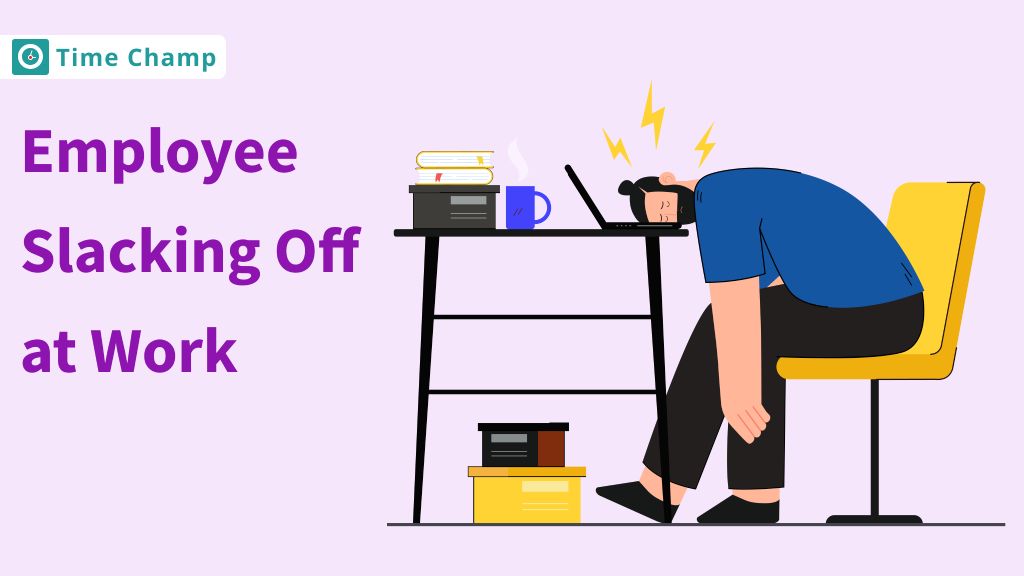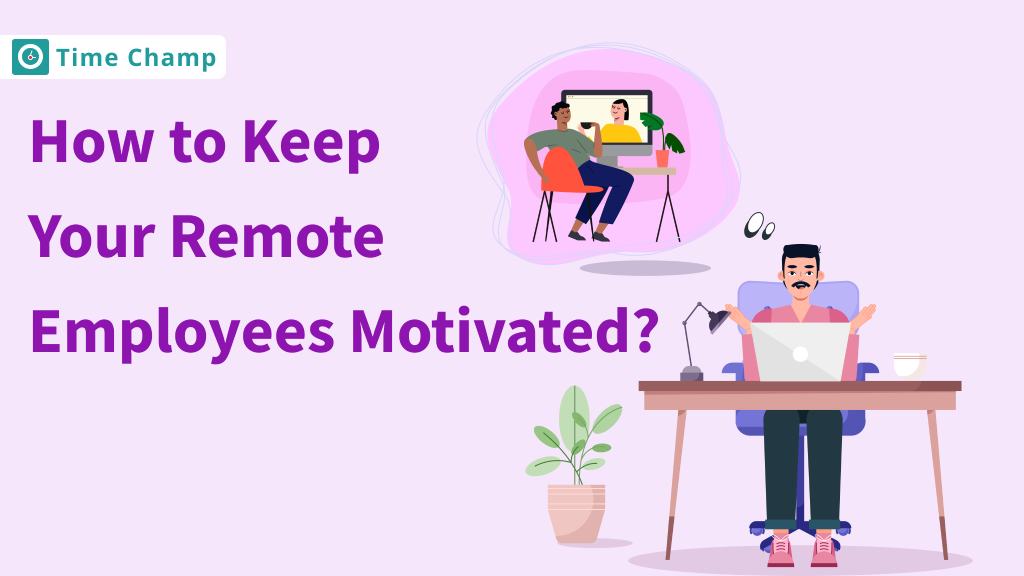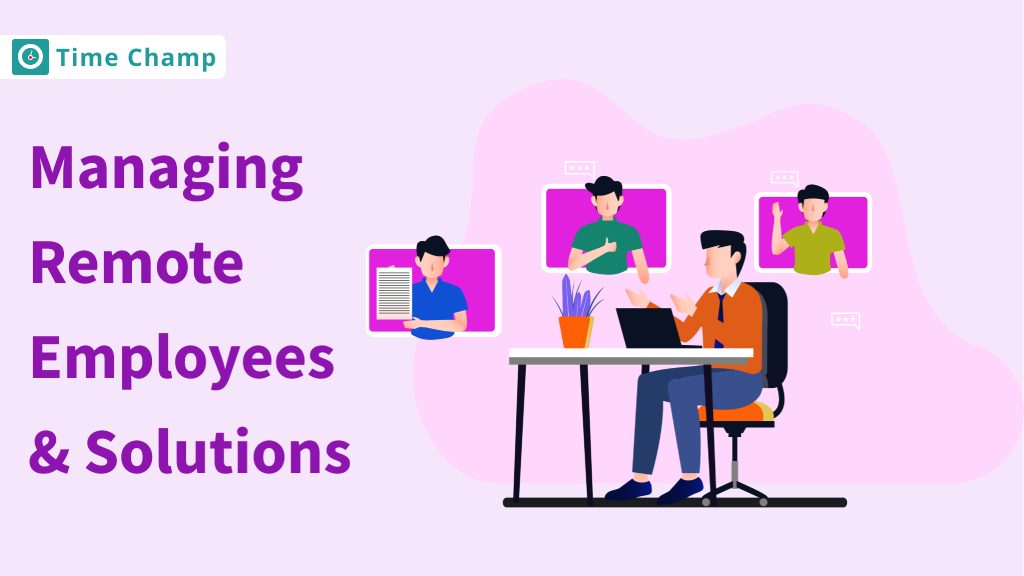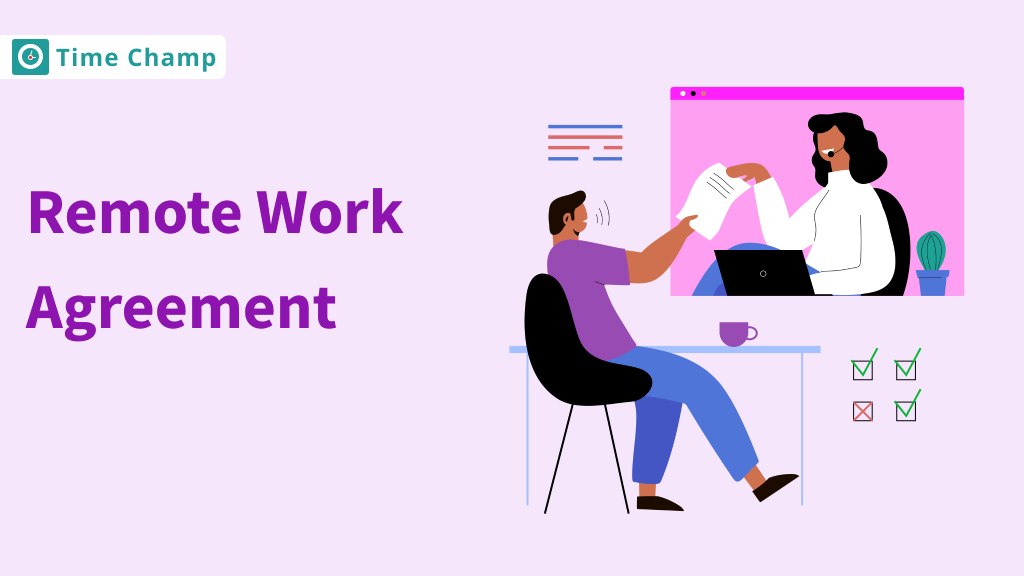Have you ever found yourself checking your phone for the tenth time in an hour at work? Or maybe you’re lingering a bit too long at the coffee machine? That’s what we call “slacking off” at work when we’re not as focused or productive as we should be. Slacking off at work these days is very easy you just need to hover around your mobile for a bit and time flies like an aeroplane. It happens to the best of us, but when it becomes a habit, it can impact our work and our team. Let’s dive into what causes slacking off at work and how to tackle it to keep ourselves and our workplace on track.
According to businesscheif.com American employees waste an average of 2.09 hours during an eight-hour workday, resulting in a daily cost of approximately $39.98 per employee to the company.
What is Slacking Off?
Slacking off means not putting in the effort or attention needed for your work. It could be spending too much time on personal things like chatting or browsing the internet instead of focusing on your tasks. This can lead to lower productivity and impact your work performance.
According to a survey conducted by America Online and Survey.com, employees spend most of their time browsing the internet during work hours.
What are the Reasons for Employees Slacking Off at Work?
There might be many reasons for your employees to slack off and we must find those reasons to prevent employees from slacking off at work during working hours.
Here are some of the reasons that cause employees to slack off at work.
- Lack of motivation: Employees might slack off if they don’t feel motivated or engaged with their work. This could be due to a lack of recognition, opportunities for career growth, or boring tasks.
- Poor work environment: A negative or stressful work environment can contribute to slacking off at work. Factors like poor management, inadequate resources, or unclear expectations can demotivate employees.
- Personal distractions: Personal issues or distractions, such as social media, personal calls, or other personal responsibilities, can take employees’ focus away from their work tasks.
- Burnout: Overworked Employees may experience burnout, leading to reduced motivation and productivity.
- Lack of accountability: When employees feel that their work isn’t being monitored or that there are no consequences for slacking off at work, they may be more likely to do so.
- Health issues: Physical or mental health problems can impact employees’ ability to concentrate and perform well at work.
- Poor time management: Employees who struggle to manage their time effectively may procrastinate and slack off as a result.
- Job dissatisfaction: Employees who are not happy with their jobs or feel that their skills are not utilized effectively might be more prone to slacking off.
- Job insecurity: Employees who feel insecure about their jobs or future prospects within the company may become demotivated and less focused on their work which might cause them to Slack Off.
- Poor work-life balance: Employees who feel overwhelmed by work and have little time for personal interests or relaxation may be more likely to slack off as a way to cope. However, A manager or employer can also become the reason for employees to slack off.
- Neglecting their point of view: Not valuing their perspective can make employees feel unimportant. This might lead them to lose interest in their work.
- Developing a Negative Work Environment: A negative or unsupportive work environment can make employees feel disconnected and more likely to slack off.
- Lack of clear goals: When employees are unsure about what is expected of them or how their work contributes to the organization’s overall goals, they may lose motivation and slack off.
- Lack of recognition: Employees who feel that their efforts are not appreciated or acknowledged may become disengaged and less motivated to perform at their best.
How to Identify Employee Slack Off?
There are some signs of Slack Off if you notice any of these signs mentioned here then have a conversation with that employee.
- Decreased output: If an employee’s work output has noticeably decreased, it could be a sign of slacking off. This may include incomplete tasks, missed deadlines, or lower-quality work.
- Increased distractions: Employees who are easily distracted or frequently engaged in non-work-related activities, such as excessive socializing or browsing the internet, may slack off.
- Frequent breaks: While breaks are important for productivity, excessive or unexplained breaks may indicate that an employee is avoiding work.
- Lack of initiative: Employees who show a lack of interest in taking on new tasks or responsibilities may be slacking off at work.
- Negative attitude: A sudden or persistent negative attitude towards work or colleagues can be a sign of dissatisfaction, leading to slacking off at work.
- Decreased engagement: Employees who are disengaged or seem disinterested in their work may be slacking off.
- Physical signs: Signs such as frequent yawning, looking tired, or appearing restless can indicate that an employee is not fully focused on their work.
Effective Ways to Stop Employees from Slacking Off at Work
If you notice any of the signs mentioned above then it is the right time to take action and resolve slacking. Here are some of the methods to stop your employees from slacking off at work.
1. Set Clear Expectations
- Job Responsibilities: Clearly define the specific tasks and duties that each employee is expected to perform. This includes both daily responsibilities and long-term projects.
- Performance Standards: Define clear metrics for success and how performance will be evaluated. This helps employees understand what is expected of them and how their work will be measured.
- Importance of Role: Explain to employees how their role contributes to the overall success of the team and the organization. This helps them understand the significance of their work and motivates them to perform better.
- Regular Updates: Provide regular updates on expectations and any changes in responsibilities. This ensures that employees are always aware of what is expected of them and can adjust their work accordingly.
2. Provide Regular Feedback
- Performance Evaluations: Schedule regular performance evaluations to provide employees with feedback on their performance. This helps them identify their strengths and areas where they can improve.
- Recognition and Rewards: Recognize and reward employees for their achievements and hard work. This can be done through verbal praise, bonuses, or other incentives. Recognition helps boost morale and motivates employees to continue performing well.
- Addressing Issues: Address any issues or concerns promptly to prevent them from impacting performance. This includes handling performance issues, conflicts within the team, or any other challenges that may arise.
3. Encourage Open Communication
- Culture of Openness: Create a culture where employees feel comfortable expressing their thoughts and concerns. This can be done by encouraging open dialogue, listening to employee feedback, and being open to suggestions for improvement.
- Regular Team Meetings: Host regular team meetings to update progress, address challenges, and generate new ideas. This provides an opportunity for employees to share updates on their work, ask questions, and collaborate with colleagues.
- Open-Door Policy: Implement an open communication policy to encourage employees to seek help or guidance when needed. This ensures that employees feel supported and can address any issues or concerns they may have openly.
4. Offer Incentives
- Bonuses: Provide incentives such as bonuses for meeting or exceeding performance expectations. Bonuses can be based on individual performance or team performance, depending on the goals of the organization. This motivates them to work harder and reduces the chances of slacking.
- Additional Paid Time Off: Offer additional paid time off as a reward for employees who consistently perform well. This provides employees with an incentive to work hard and can help improve team spirit.
- Recognition and Celebration: Recognize and celebrate team achievements to motivate employees to continue performing well. This can be done through team events, awards ceremonies, or other forms of recognition. This enforces a culture of appreciation and encourages employees.
5. Promote Work-Life Balance
- Taking Breaks: Encourage employees to take breaks throughout the day to rest and recharge. Taking breaks can enhance productivity and prevent burnout.
- Flexible Work Arrangements: Offer flexible work arrangements, such as virtual work or flexible hours, to help employees manage their personal and professional lives. This allows employees to have more control over their schedules and can improve work-life balance.
- Stress Management Resources: Provide resources for managing stress and maintaining mental health. This can include access to counseling services, stress management workshops, or other programs aiming to promote employee well-being.
6. Provide Opportunities for Growth
- Training Programs: Offer training programs, workshops, and professional development opportunities to help employees improve their skills and advance in their careers. This shows employees that you are invested in their professional growth and can help improve employee morale and motivation.
- Career Path: Create a career path for employees to see opportunities for growth and advancement within the organization. This can include opportunities for promotion, lateral moves, or additional responsibilities that allow employees to develop new skills and progress in their careers.
7. Lead by Example
- Work Ethic: As the saying goes “Actions carry more weight than words.” as a manager or employer you should display a strong work ethic and commitment to your role and the organization. This sets a positive example for your team and shows them the importance of being dedicated and focused on their work.
- Proactive Approach: Be proactive in addressing issues and challenges, and seek feedback from employees on ways to improve. This shows employees that you are invested in their success and are open to their input.
- Appreciation: Show appreciation for your team’s efforts and contributions to foster a positive work environment. This can be done through verbal praise, written recognition, or other forms of appreciation that show employees that their hard work is valued.
8. Appreciate Employee Work
- Regularly recognize and appreciate employees for their good work.
- This motivates them to stay focused and work hard.
- Organize employee appreciation events regularly to consistently make them feel recognized and appreciated.
Celebrating employee achievements creates a healthy working environment and leading by example can go a long way in preventing slacking and maintaining productivity.
Fortunately, Time Champ can help You to effortlessly monitor and track your employee productivity and provide reports on a daily, weekly, and monthly basis. By using Time Champ’s features, you can easily track which employee is slacking in the early stages so that you can prevent early.
What is Time Champ?
Time Champ is an effective software for effortlessly monitoring and tracking employee performance and productivity. Time Champ can help you identify potential slacking early on by providing detailed insights into employee activities. With Time Champ, you can easily track work hours, task completion rates, and overall productivity levels. This allows you to address any issues promptly and keep your team focused and productive.
Key Features of Time Champ that can assist you in tracking slacking
1. Productivity Tracking
With the Productivity tracking feature, you can easily get insights into your employees’ overall performance. You will get a detailed report on your employee’s productive, non-productive, and neutral time during working hours and you can also view all the apps and websites visited by your employee which are again categorized as productive, non-productive, and neutral applications so that managers or employers can identify patterns and address slacking.
2. Employee Monitoring
Employee Monitoring feature helps businesses to monitor their employee activities in both remote and hybrid modes. This feature helps you view which tasks your employees are working on, how much time they are taking for each task and how many tasks they have completed in a day. This gives you insights on how to assign tasks according to your employee capabilities. Additionally, you can get all the reports tailored to your company’s needs.
3. Automatic Attendance
Automatic Attendance Feature allows businesses to automatically capture employee attendance and automatically generate detailed reports. Managers or employers can easily access real-time attendance reports allowing them to identify any attendance-related issues so that they can prevent slack off by identifying through attendance reports.
4. Task Tracking
The Task Tracking feature helps managers see what tasks employees are working on, what’s done, and what’s overdue. This helps managers manage workloads better. By tracking employee tasks and the time spent on each task, Time Champ can help managers identify tasks that are taking longer than expected or are being neglected and indicate potential slacking.
5. Automatic Alerts
As the saying goes “prevention is better than cure” The Automatic Alerts feature helps to send alerts or notifications to managers when certain things happen, like if an employee spends too much time on websites not related to work. This helps managers quickly notice and address any slacking behavior.
Conclusion
In conclusion, Punishment is not the only solution for slacking off rather opt for positive reinforcements like mentoring and assisting your employees when needed. Always remember to appreciate your employees when done good work and assist them when they are in trouble, by creating a positive work culture with such initiatives you can uplift employee morale and motivation, leading to improved productivity and job satisfaction.
Also Read
Employee Burnout Signs and How to Prevent It
Frequently Asked Questions
Slacking at work is when employees don’t work as hard as they should. It can happen when they delay tasks, get distracted easily, or spend too much time on non-work activities. This can reduce productivity and affect the quality of work.
Start by having a private conversation with the employee to discuss your observations and expectations. Offer support and direction to help them enhance their performance.
To prevent employee slacking, communicate expectations clearly, provide feedback and support, foster a positive work environment, offer incentives for performance, set achievable goals, provide training opportunities, and monitor performance regularly.
While discipline may be necessary in some cases, it’s often more effective to focus on positive reinforcement and providing support to help employees succeed.
Use tools like Time Champ to monitor employee activities and track progress on tasks. This can assist you in pinpointing areas where employees might require extra assistance.
If coaching and support don’t improve the situation, you may need to consider more serious consequences, such as formal disciplinary action.
Take the time to understand the root cause of the issue. Have an open and honest conversation with the employee to discuss their workload and any challenges they may be facing.
Recognize and reward their efforts, provide opportunities for growth and development, and create a positive work environment where employees feel valued and supported.







